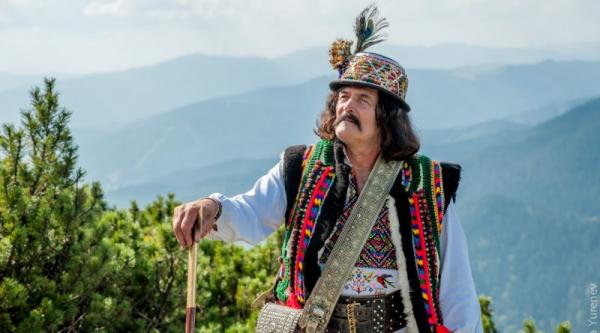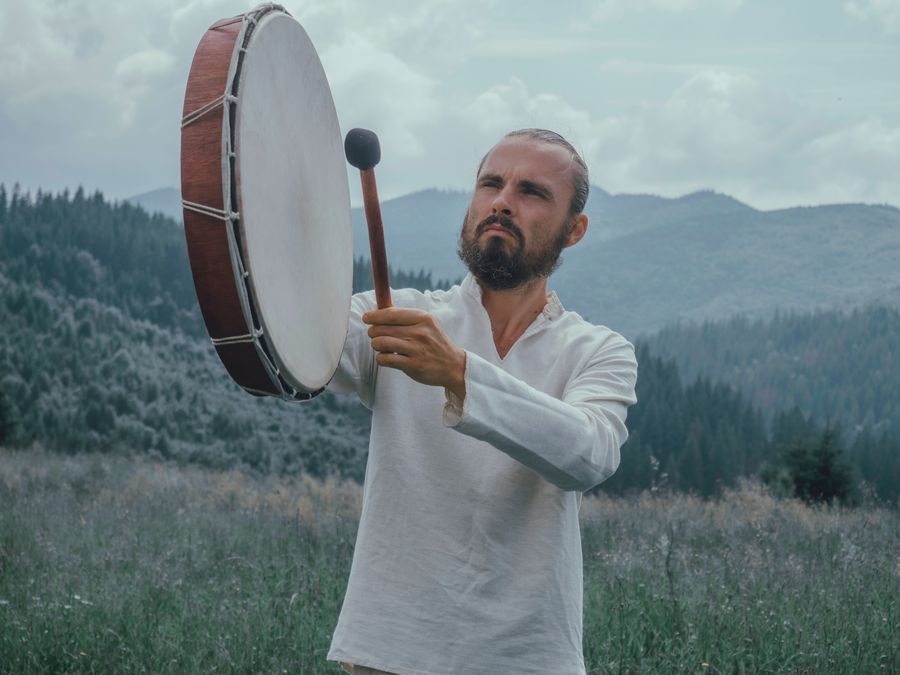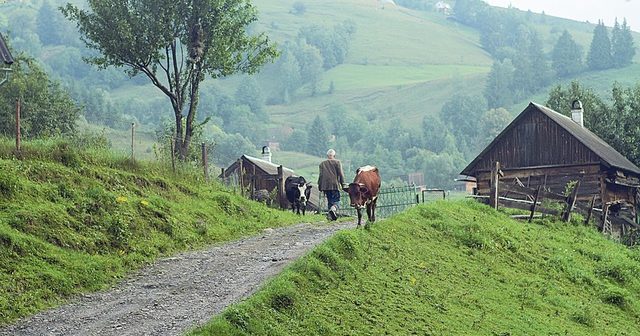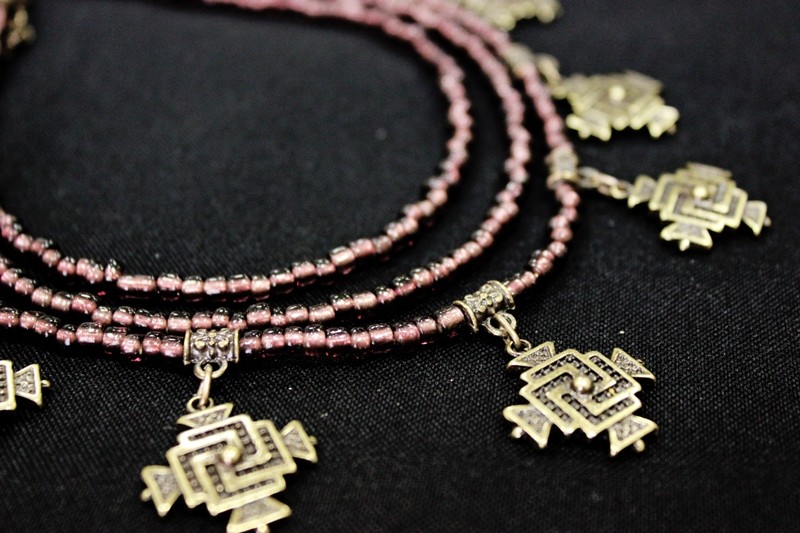Ukrainian national Hogwarts, or where to look for Carpathian molfars
12 April 2023
“Unusual” — that’s what our ancestors called the owners of supernatural abilities, with such a simple and complicated word at the same time. They were those who could cause rain, calm the storm, heal the wound, and recover the human soul. Who knew how to communicate with representatives of the animal world and demons, could convey greetings to the other world, or was an intermediary between gods and people… But why “was”? Maybe he “is”? The answer to this question depends on whether the Molfars in the Carpathians have remained. Let’s look for it together.
Are the molfar, fortune-teller, and witcher the same thing?
Before starting to look for an answer to the question of who the molfars are and whether they exist in modern Ukraine, we should remember one simple truth: depending on the region, these oddballs are called differently. Someone calls them fortune-tellers, and others call them witchers. Sometimes molfars are simply called healers or soothsayers, and at other times, they are called “prymivnyky”. Another popular option is a quack. How many names are there! They should be recorded in the memory to at least understand that a molfar, a witcher, and a fortune-teller may well be the same person.
But why molfar? — you will ask. Why exactly has this name become the most popular and significant? The answer is very simple: because of all the names of healers and miracle workers known to mankind, the Hutsuls preferred the word “molfar”. It was mainly used, stuck, and took root in Verkhovyna, a high-altitude village that is more strongly associated with Molfarism than other Carpathian villages.
So who is Molfar?
To put it simply, a molfar is a person endowed with supernatural abilities. But we would not like to use primitive phrases to describe the Carpathian inhabitants, who are capable of creating real miracles. Therefore, for the definition of the word “molfar”, we turned to Mykhailo Mykhailovych Nechay. This person is a well-known Hutsul soothsayer who once described the Molfar accurately and extensively.
- Molfar’s weapons are his words and songs.
- “Molfar” does not equal the word “good”. Not all molfars choose the light side. Carpathian soothsayers are capable of doing more than just good deeds.
- Molfarism can be inherited, but it is not a rule. Someone is born with extraordinary abilities, having inherited them from ancestors, and someone receives them as a gift from the universe.
- Molfar, regardless of what kind of magic he possesses (black or white), is always a person with a deep inner world. Otherwise, he will not be able to appeal to heavenly forces and control natural phenomena.
- Violating the laws of nature, Molfar risks his supernatural abilities. More precisely, their loss. There are rules even in molfar work, and those who break them will have to pay a huge price for it.
Our ancestors believed that, in addition to themselves, many other entities lived in the mountains. Some of them were dark, and some were light. Some just interfere and harm, and others, on the contrary, help. And the Carpathian molfars are mediators between humans and entities, as well as wonders capable of maintaining the balance of black and white in and out of life.
What are molfars capable of?
“Things don’t come together,” people say. So it is with healers: the molfars of Ukraine differ from each other. Just imagine: there is a cook, and there is a confectioner, a baker, a sous chef, a technologist, etc. These are all cooks, but each of them has his own specific style of cooking. So it is with molfars: each of them knows something specific, and in this “something” he is stronger than his molfar colleagues.
- Hradivnyk, a.k.a. hailstormer. This is the name of molfars who can control natural phenomena. Another name is a cloud worker (“khmarnyk”). Such freaks are turned to when it is necessary to cause rain or avert a storm.
- Fortune-teller. Literally, he is “one who divines.” Such molfars can predict the future and see the past. People also call them soothsayers.
- Prymivnyk, a.k.a. the healer. He is a witch healer and a magical doctor who, with the help of mountain plants, songs, and prayers, can heal wounds and cure terrible ailments.
It is interesting that in some regions of the Carpathians, a distinction was made between magicians who treated people and oddballs who treated livestock. Some people separated from the few Carpathian molfars the planetarians, who divined by the stars, and the “hadiery“, who knew how to save a person and a domestic animal from a snake bite.
Attributes of Carpathian molfars
A magician is a person who not only has certain abilities but is also surrounded by certain things that complement his cosmic image, for example, a black cat, a mantle, or an unusual hat. And if the mantle and hat are not indicative of the Carpathian molfar, then the black cat is really a totemic animal. This sacred animal took part in almost any ceremony. It was believed that the cat is somewhere in the middle between us and the other world and helps its owner build connections between worlds. However, the black cat is not the only symbol and attribute of the Carpathian molfar. There are others.
Molfa
Molfa has no definition. It is not a stone, not a hat, not a stick, and at the same time, it is both the first, second, and third words. How to understand this? — you will ask. It’s simple: a molfa is any item that a Carpathian magician uses and that he endows with magical abilities. Someone uses a grandmother’s ring that helps in magic; someone uses a piece of cloth; and someone is unable to cast a spell without an old book or a branch of a certain tree. Basically, a molfa is any ritual item. It’s the healer who chooses what item it will be, and only he knows for sure the criteria for this choice.
Hromovytsi
This is what had (and has) literally every Carpathian molfar. Hromovytsia is a rolling pin that meets certain parameters:
- It broke off from the tree on its own due to a lightning strike;
- It has a natural opening.
It may seem strange to a modern person that an ordinary rolling pin is used for magical manipulations, but let’s not forget that in ancient times, a lightning strike was considered a divine act. Our ancestors were certain that when thunder roars, God rides across the sky on his magical chariot and incinerates with lightning all the evil that catches his eye.
Hail knife
The knife is one of the most widespread mystical symbols, and molfarism does not deny but once again confirms this fact. If a cat is a faithful friend of a magician from the living world, then a knife is his one hundred percent counterpart among inanimate objects. With this knife, the Carpathian molfar could do many interesting and magical things, which do not need to be explained:
- the knife healed the wounds;
- treated ulcers;
- produced milk if the molfar stuck it in a tree;
- turned a stone into cheese, etc.
The rite of consecration of the hail knife
At the beginning of its existence, every hail knife was an ordinary scythe until the molfar took it in his hands and cut out of it a so-called “chepelyk”, a small Hutsul knife. After creation, this item must be consecrated. What exactly does the rite of consecration of a hail knife look like?
- The magician is waiting for Christmas Eve or Easter.
- When the clock strikes midnight, the magician takes off all his clothes.
- After that, the molfar takes a large bowl, puts a little of each of the dozen festive dishes in it, and adds a Hutsul knife, a candle, and an ax.
- With this all in his hands, the Carpathian molfar goes to the threshold of his house and says certain words.
When the rite is completed, the small Hutsul knife turns into a powerful charm and a strong tool for the healer.
Zghardy
You may have heard this word in a jewelry store, but in fact, zghards are not just decorations. They are ritual charms that look like solar crosses. Talented craftsmen have always been involved in the production of these ornaments. Each order of molfar was individual. The badges were not repeated, so it was basically impossible to find the same ones.
The zghards were strung on special chains called retiazi. For the first time, the Carpathian molfar wore badges around his neck at the time of initiation. Each subsequent initiation replenished the number of zghards on the chain by one unit. It is easy to guess that with each new initiation, the zghards increased in size. Therefore, the Molfar ritual decoration usually had not one but several rows of solar crosses.
Life hack: By the number and volume of rows of solar crosses on zghards, you can determine the level of authority of the molfar. The more lines, the higher the spiritual level of the Carpathian sorcerer.
Magic stones
The fact that each stone has a memory and special energy is no secret to anyone. And Carpathian molfars know about the magical properties of stones like no one else. Any pebble could become a ritual. The only important thing was that it fit the “profile” of the molfar. Healers and prymivnyky often used semi-precious stones because they had the ability to heal and recover. At the same time, soothsayers and hailstormers usually used manufactured stones such as granite, marble, and others in their rites.
How to find molfars in the Carpathians?
Are there molfars in the Carpathians? — you will ask. Yes, they certainly are there. Molfars continue their existence, passing on knowledge and skills from generation to generation. Meeting a real molfar is a great rarity and a manifestation of luck. It is about as incredible as finding a flowering fern on the feast of Ivan Kupala.
Unfortunately, the active molfars of the Carpathians are a small group of magicians. Their homes are not shown on Google Maps. Therefore, you will have to find a way to reach the soothsayer yourself. And in this place, it is worth mentioning the proverb “the tongue will lead to Kyiv”. By asking the inhabitants of mountain villages, you will find a true Carpathian miracle one hundred percent. It is worth preparing for the fact that the path there will not be easy. People say that molfars choose the most remote corners of the meadows for their lives so that nothing interferes with their union with nature. But those who seek will surely find. Believe in yourself, and you will succeed. By the way, the fact that you are reading this material and dreaming of meeting a Carpathian molfar is one of the strongest proofs that molfar is an important part of us and our national consciousness.
Molfarism these days
With the beginning of the full-scale invasion of Russia on the territory of our country, the word “molfar” acquired a special meaning and sound: loud, encouraging, and promising. Ukrainians, who until February 24, 2022, were quite skeptical of healers and prymivnyky, changed their opinion by 180 degrees. It is not surprising, because when neither science nor analysis can give a rational answer to the question about the duration of the war and the date of its end, a person turns to an irrational path. Psychologists say that this behavior is quite predictable because each of us wants to hear encouraging promises and positive news. And no, this is not self-deception; this is the only opportunity to adapt to the terrible everyday life and find the strength to live on and do everything you can to achieve the desired victory over the enemy.
Just as the Carpathian molfars choose the dark or light side, so each of us chooses whether to believe the molfars or not. You may be skeptical of people with (alleged) supernatural powers, but the fact that Carpathian molfarism is firmly woven into our multifaceted and diverse cultural code is an absolute fact that you are unlikely to deny. Carpathian molfarism is our history, a significant part of the national heritage, and incredible and mysterious Ukrainian national magic, which will never be solved to the end. And perhaps this is where its greatest value lies…







